An all-black wardrobe is the detox for L.A. life you deserve
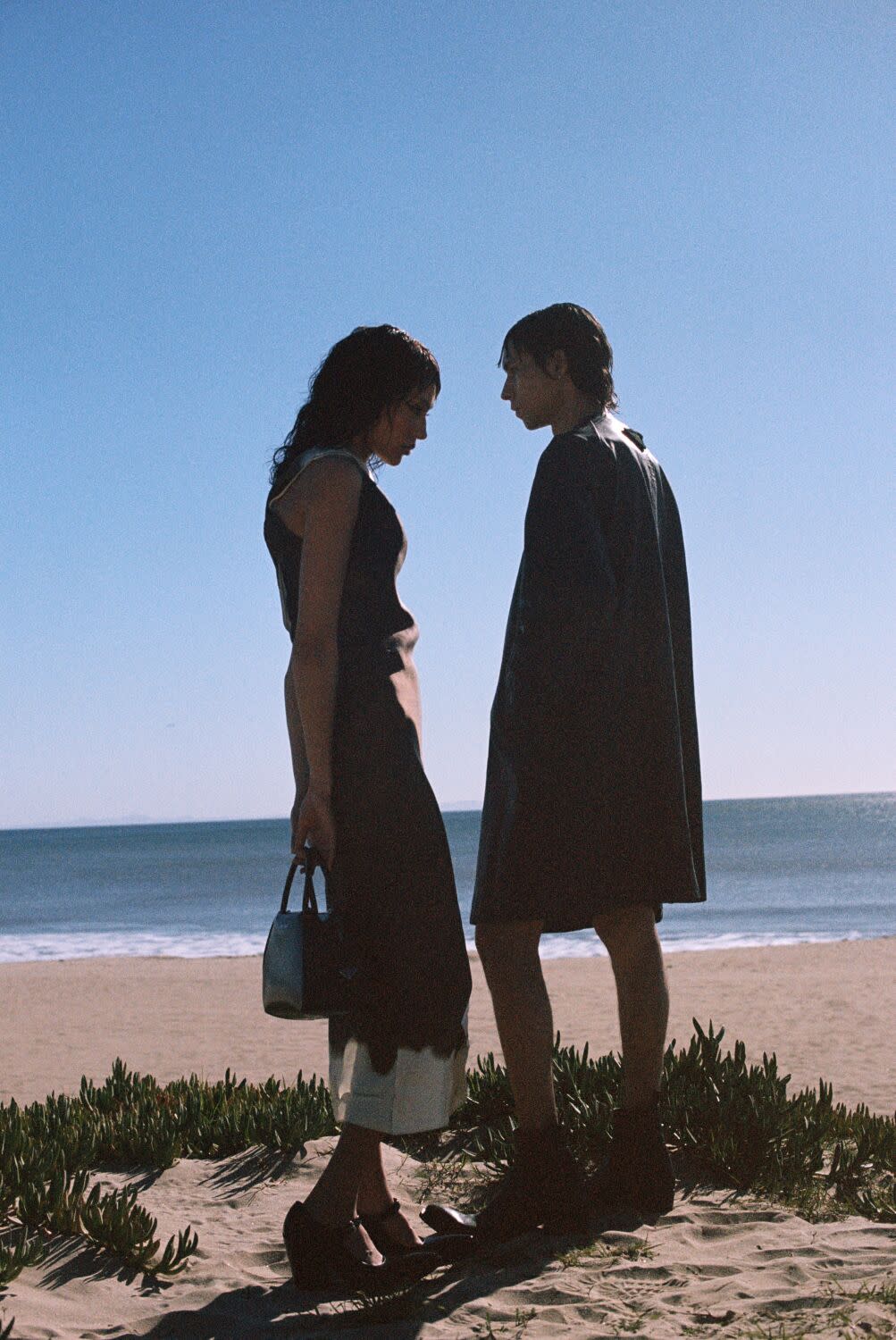
This story is part of Image issue 17, “Offering,” a special gift from L.A.’s creative community to a city that seemingly has it all. Read the whole issue here.
Black is the basic element of fashion, the oxygen and hydrogen of a wardrobe. It’s never not chic. It never goes out of style, because it’s the amalgamation of all colors at once. It speaks every language. It can be forward-thinking and progressive, or it can be, like at the recent Celine fall 2023 show at the Wiltern, a plea for nostalgia. It’s mysterious, while also being simple. It is inexorably linked with sex, but it’s not tawdry. In short, it is always, always cool. Which is why, when I felt completely uncool, I looked first to the dark mistress.
“Does an all-black outfit look good” is something I recently typed into Google. Not because I personally needed sartorial affirmations, but because I wanted to see how many other people were suffering from my current affliction: The need for a full fashion detox.
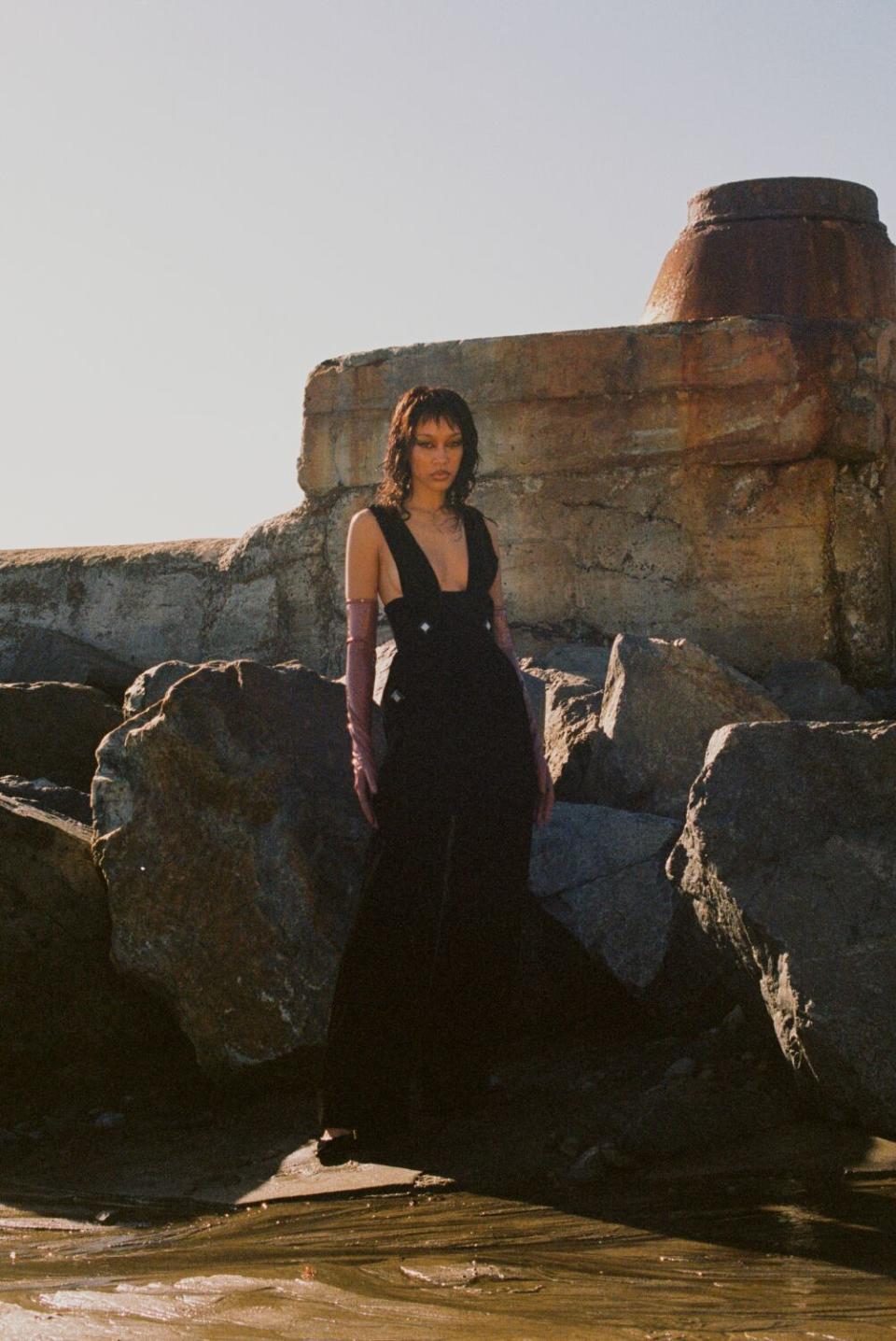
Surely, I must not be alone in feeling deeply uninspired by the state of, well, everything. The mortar and pestle of the fashion industry is here to grind your Pinterest board and your Etsy wish lists into the paste of “the next big thing.” As culture and style writer Glenn O’Brien once wrote, “Fashion will change, and this, neither mankind nor God him or herself, has the power to stop.”
Eventually, all the grails in your closet will become passé. At least for a decade, before they become retro again. This feeling of fashion’s inherently transitory nature had me asking a lot of hard questions: What if all my clothes suck? What if I can never wear this Our Legacy camp collar shirt again because camp collars peaked back in 2021? Should I just run down the streets nude like the Kony 2012 guy?
Once I took a moment to breathe, I realized that the answers to most of my questions were “no” (or “no, plus that’s socially unacceptable and will get you arrested”). Instead of having a full meltdown, I took inspiration from venerable designer Yohji Yamamoto and went headlong into my all-black era. I rehabilitated a pair of vintage Gucci trousers, scored an incredible polyamide/viscose Armani blazer that almost looks like velvet. A practically brand-new black blazer from the Row fell into my lap during a routine check of the RealReal. Studio Nicholson had an outrageously good sale. And I stocked up on white button-downs from Uniqlo.
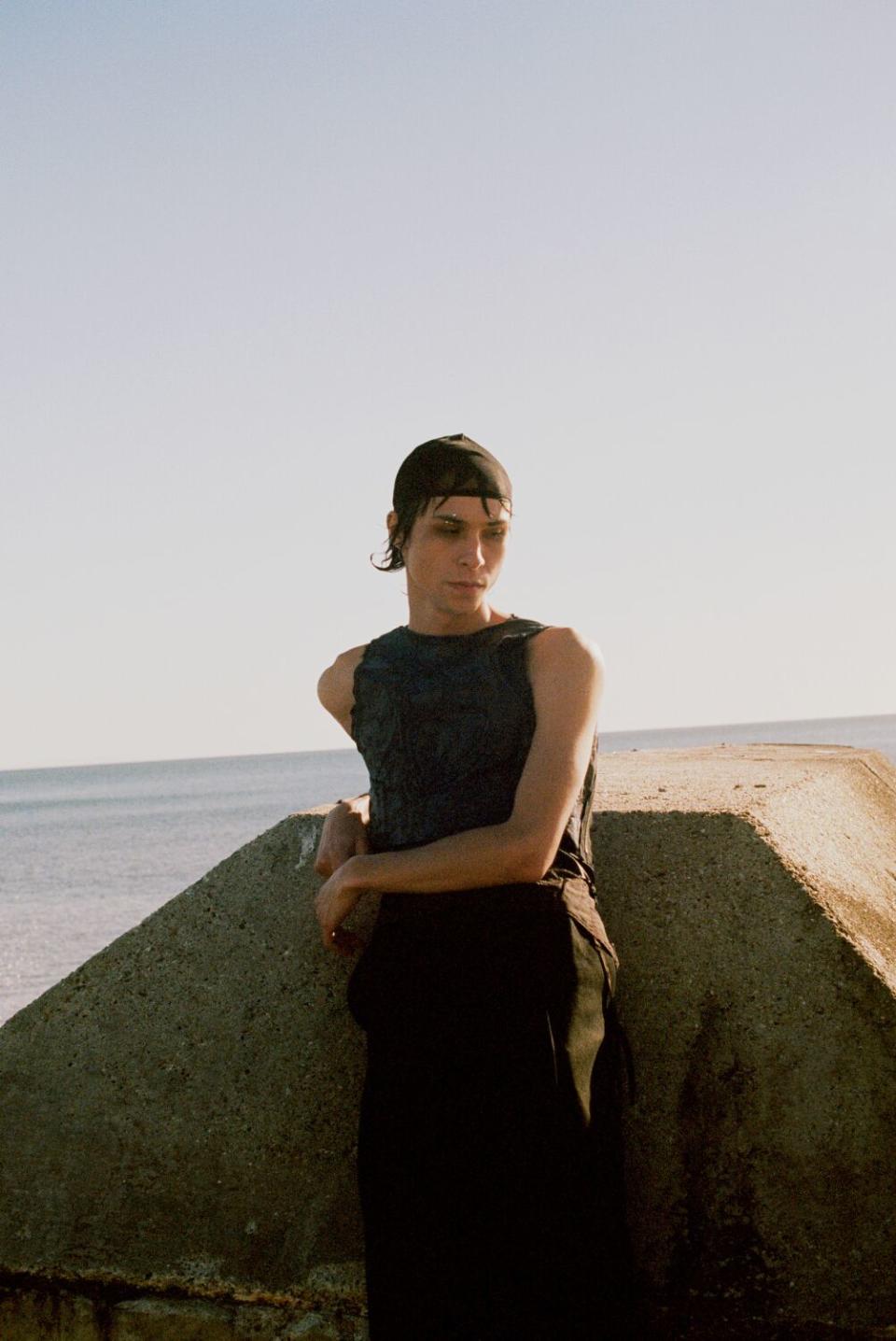
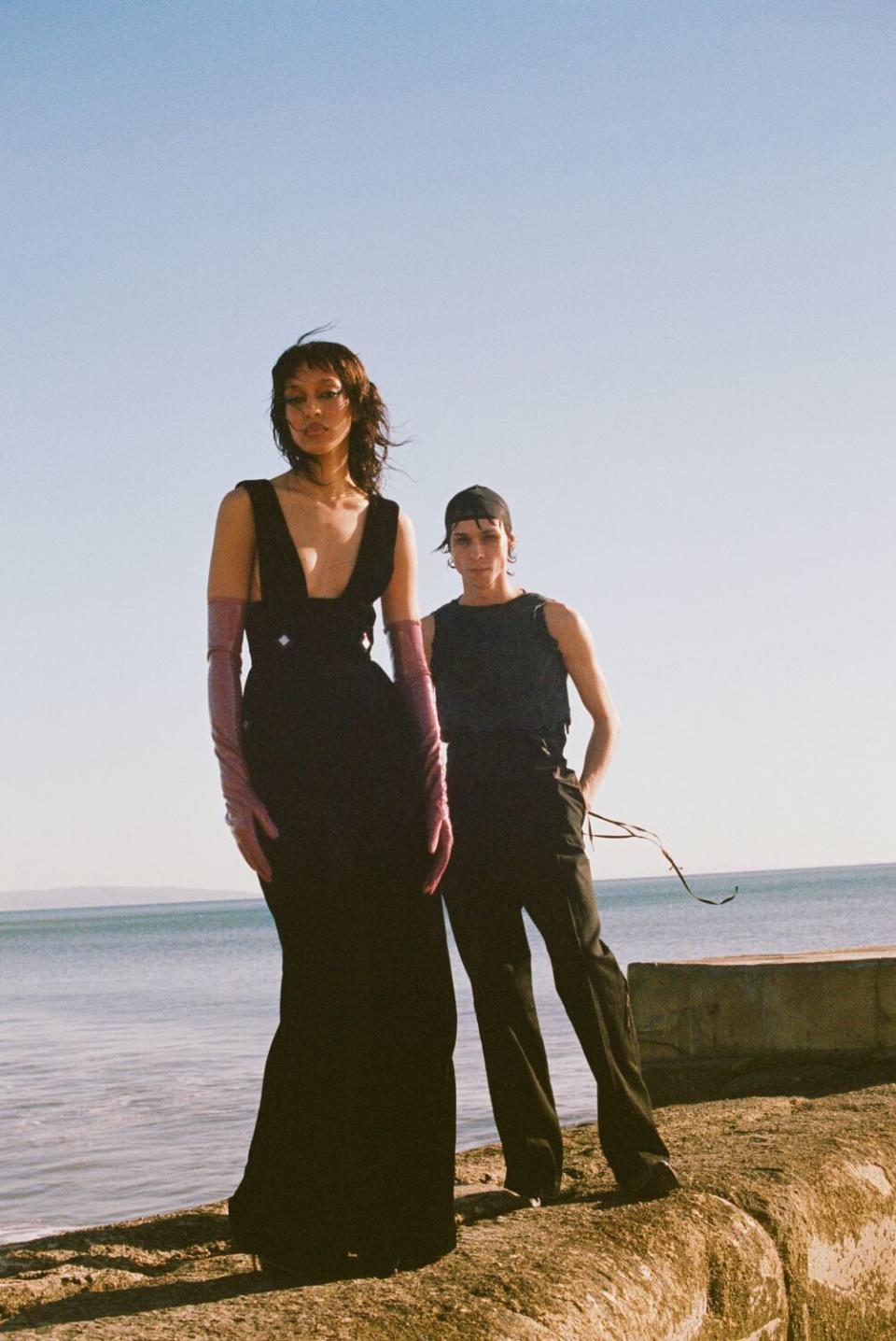
Los Angeles is a place where wearing black is something close to a fire hazard. The sun, unobstructed by vertical living, penetrates deep into your soul here. It is not a city that embraces the darkness, even if a nighttime stroll through a streetlight-averse neighborhood like Los Feliz might make you think otherwise. Perhaps it’s more than just how hot it is outside most of the year. Black doesn’t fit with the Randy Newman “Rollin' down the Imperial Highway with a big nasty redhead at my side” vision of Los Angeles.
A monochrome black outfit signals solemnity, austerity and a deep reserve of self-seriousness. L.A. is many things, but a solemn place it is not. David Lynch, David Cronenberg, Jim Jarmusch — iconoclastic filmmakers with a reputation for avant-garde works — are rarely seen in colors that aren’t deeply, midnight blacks. Even if their works can be laced with comedic or romantic asides, their reputations are that of the “serious artist.” The one you can’t easily approach at a cocktail party. Unlike me, someone you should always say hi to at a cocktail party. Even if I’m in black.
There’s a distancing quality to a primarily black outfit. It communicates tone and temperament faster than most clothes. It’s a simple, blunt statement of not quite superiority, but certainly of class. In the wrong context, all-black can make someone look like a cater-waiter. In the right context, you’re basically Rick Owens, the American designer most associated with the exquisite black.
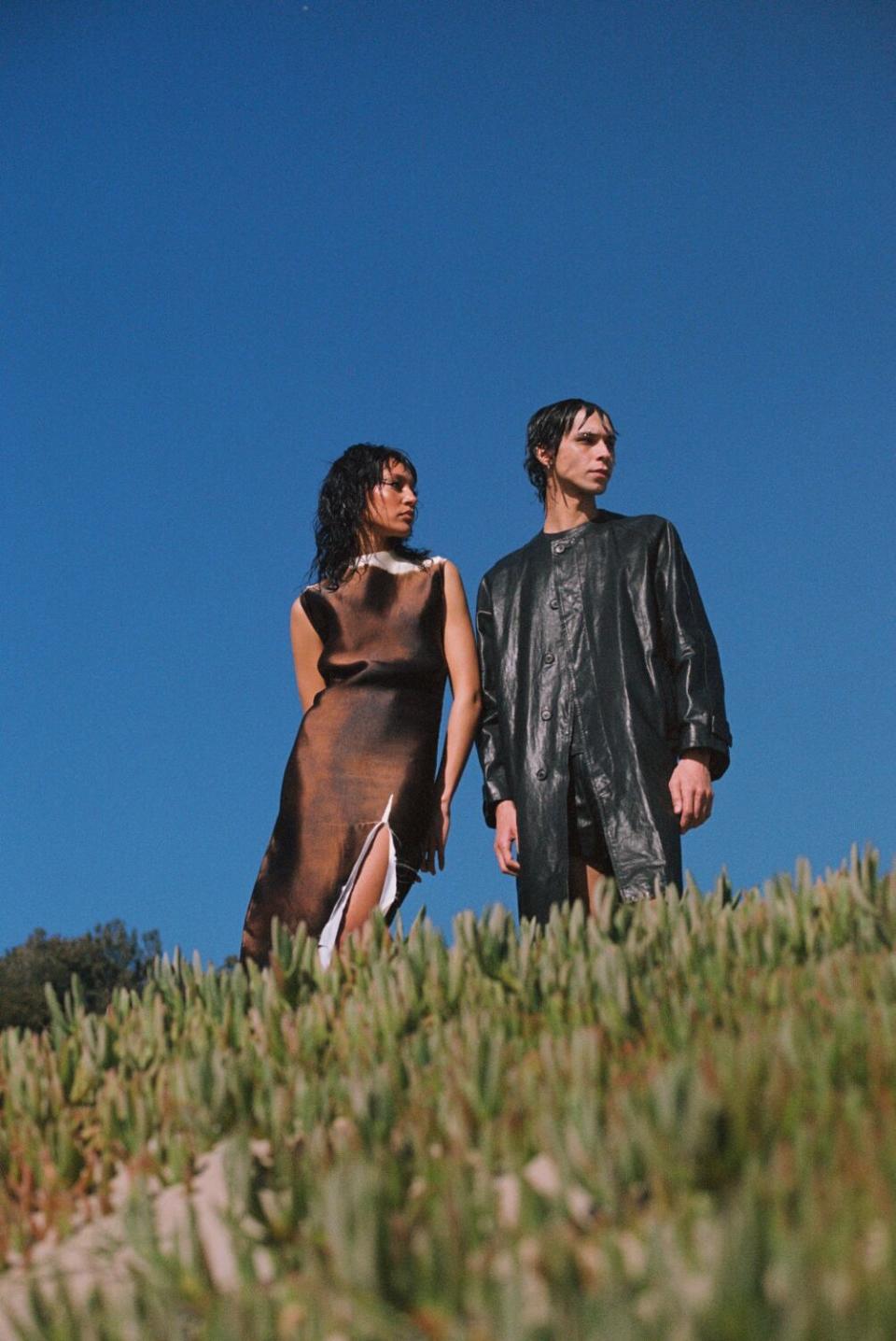
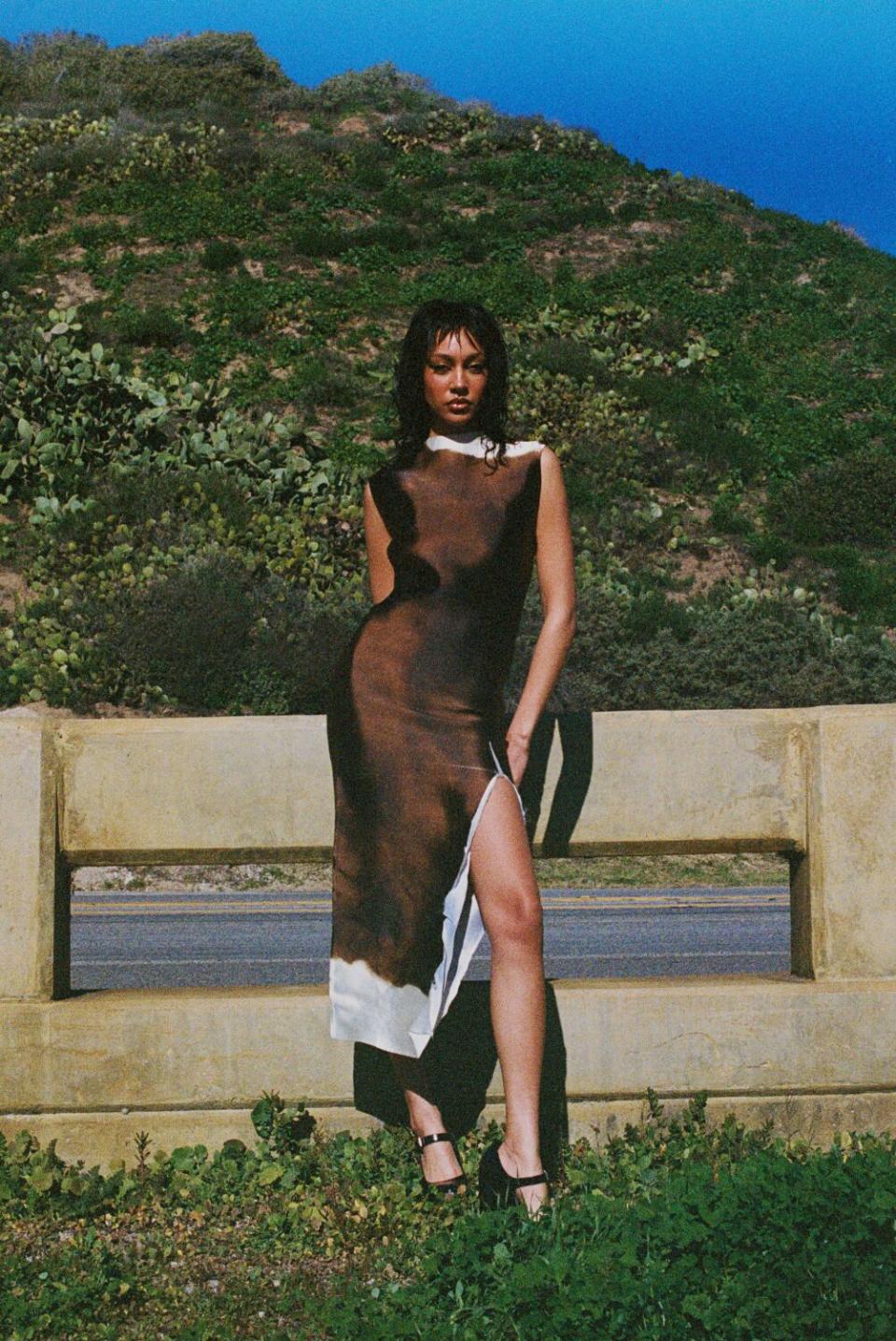
Owens’ work is sexually provocative, recalling the stark look of S&M and bondage culture. Black is the color of the dungeon, of fetish gear. The embrace of the darkness is an explicit part of that world. Owens can also be futuristic, but his work often contains a chic sense of whimsy. As someone who grew up in California and got his start in the industry in L.A., it shouldn’t be shocking that his work would have a sense of play to it.
I first started toying with the idea of shedding color from my wardrobe at an exhibition of Owens' wife, Michèle Lamy — “Turning Tricks” at Carpenters Workshop Gallery in Hollywood. Most of the work on display approximated the bits of street ephemera that skateboarders use as instruments of their craft — trash cans, park benches, fire hydrants. Sprinkled among the skate aesthetic was work from Owens: a sofa that resembled a vampire’s crypt or panic room, a black basalt bench, a white marble table that could have been fresh from a cult sacrifice.
Lamy attended the event, in a sparkly noir ensemble and her trademark gold grills. In a city defined by the way the sun illuminates the infinite spectrum of colors that our natural world has to offer, comfort can be found in the darkness. When black is deployed by artists on the level of Owens and Lamy, it can be a palette to create upon instead of a crutch. After all, how much do you need to do to draw attention to yourself if you’re carrying your husband’s head around Paris?
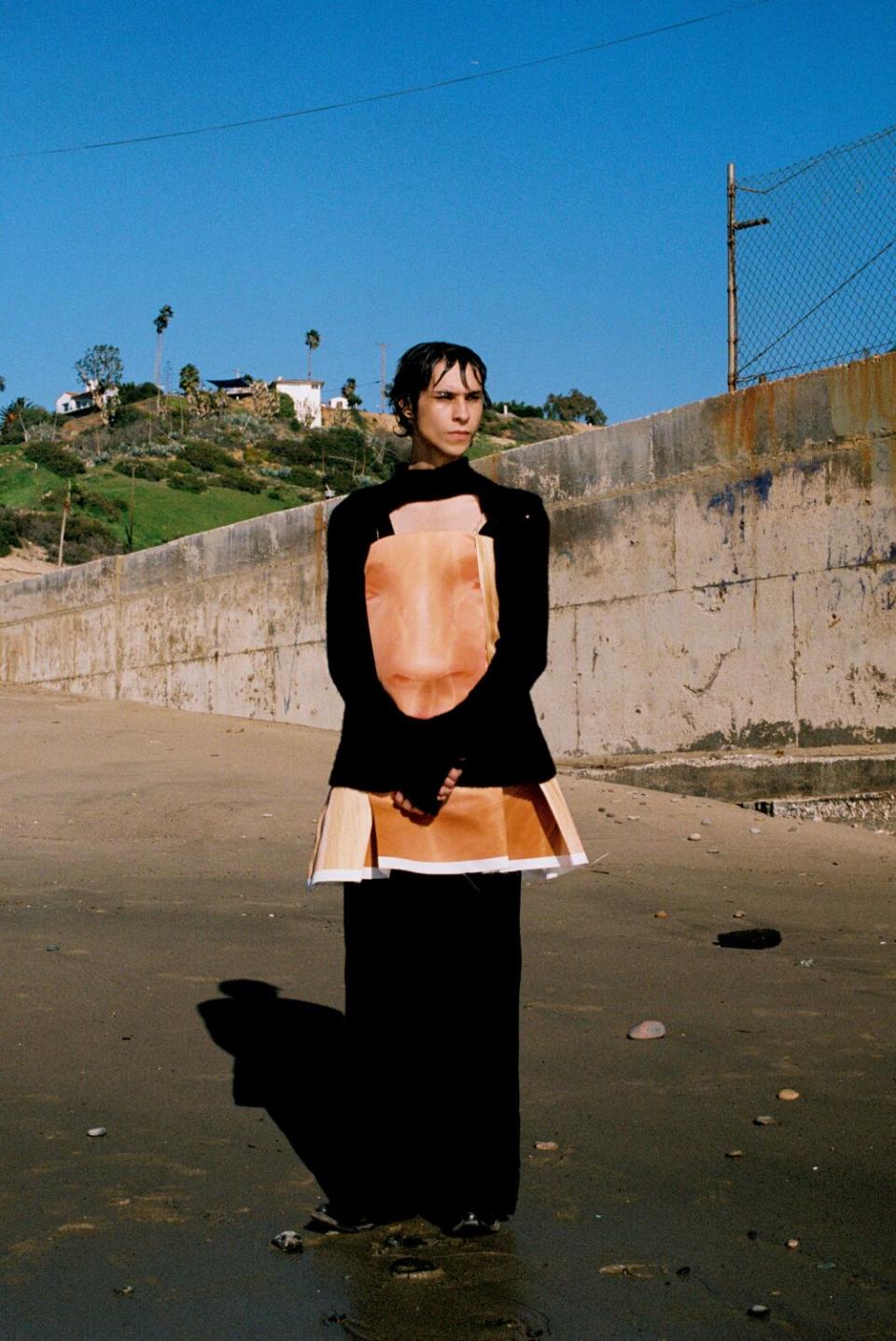
Hedi Slimane owned much of the 2000s fashion scene thanks to his slim, black ensembles that fell so perfectly on the slim, sexy celebrities of the era during his iconic run at Dior Homme. Los Angeles has long been a source of inspiration for Slimane. He made the city his home and knows its rhythms better than most designers who fly in, camp out at the Sunset Tower Hotel and swim a few laps before jetting out.
In the time Slimane was here, he perfected the elevation of what people now call “indie sleaze,” the last gasp of rock excess captured in the new indie-rock documentary “Meet Me in the Bathroom.” That look is first and foremost associated with New York and bands like the Strokes, Interpol and the Yeah Yeah Yeahs. And yet, Slimane chose to host his show here in L.A.
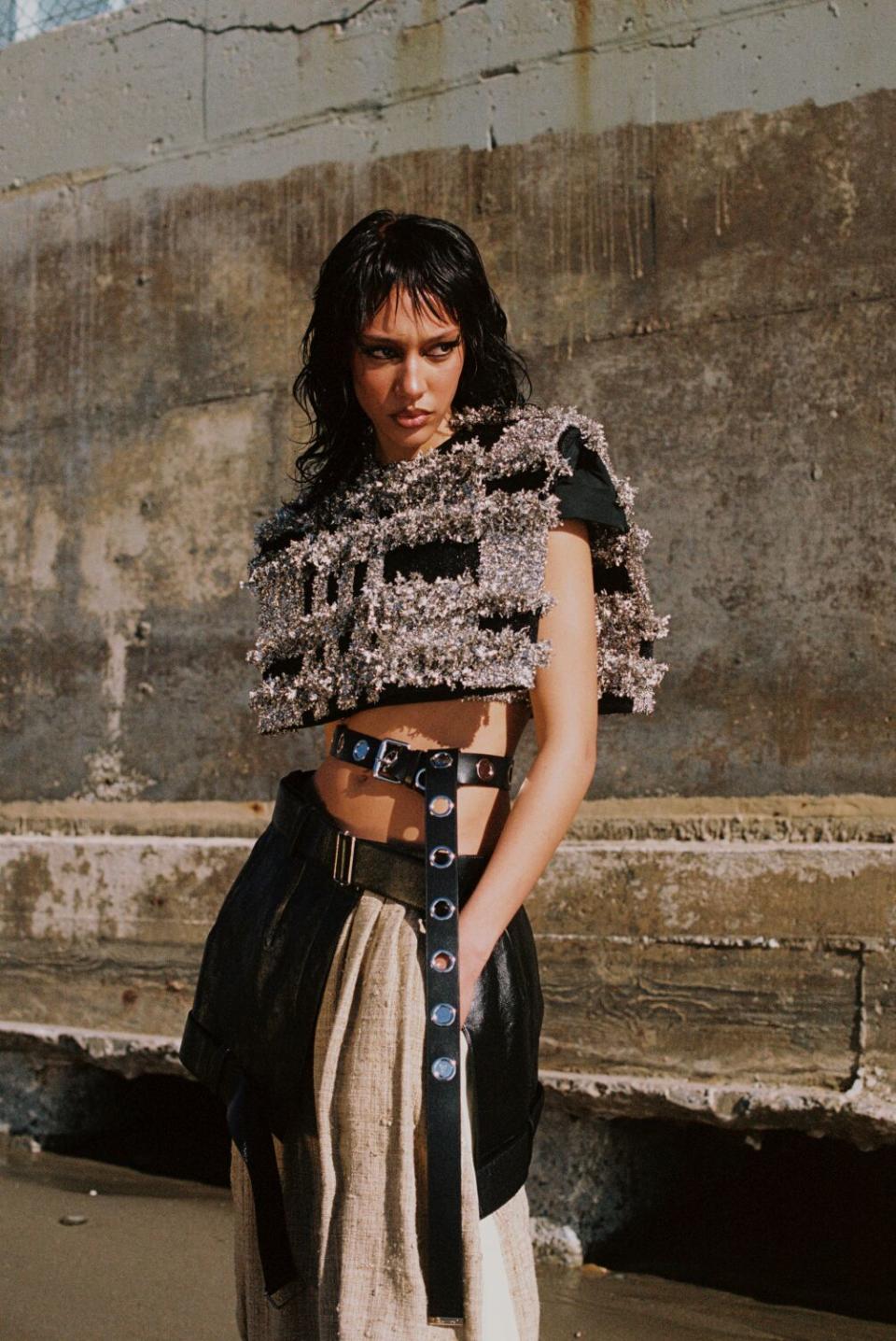
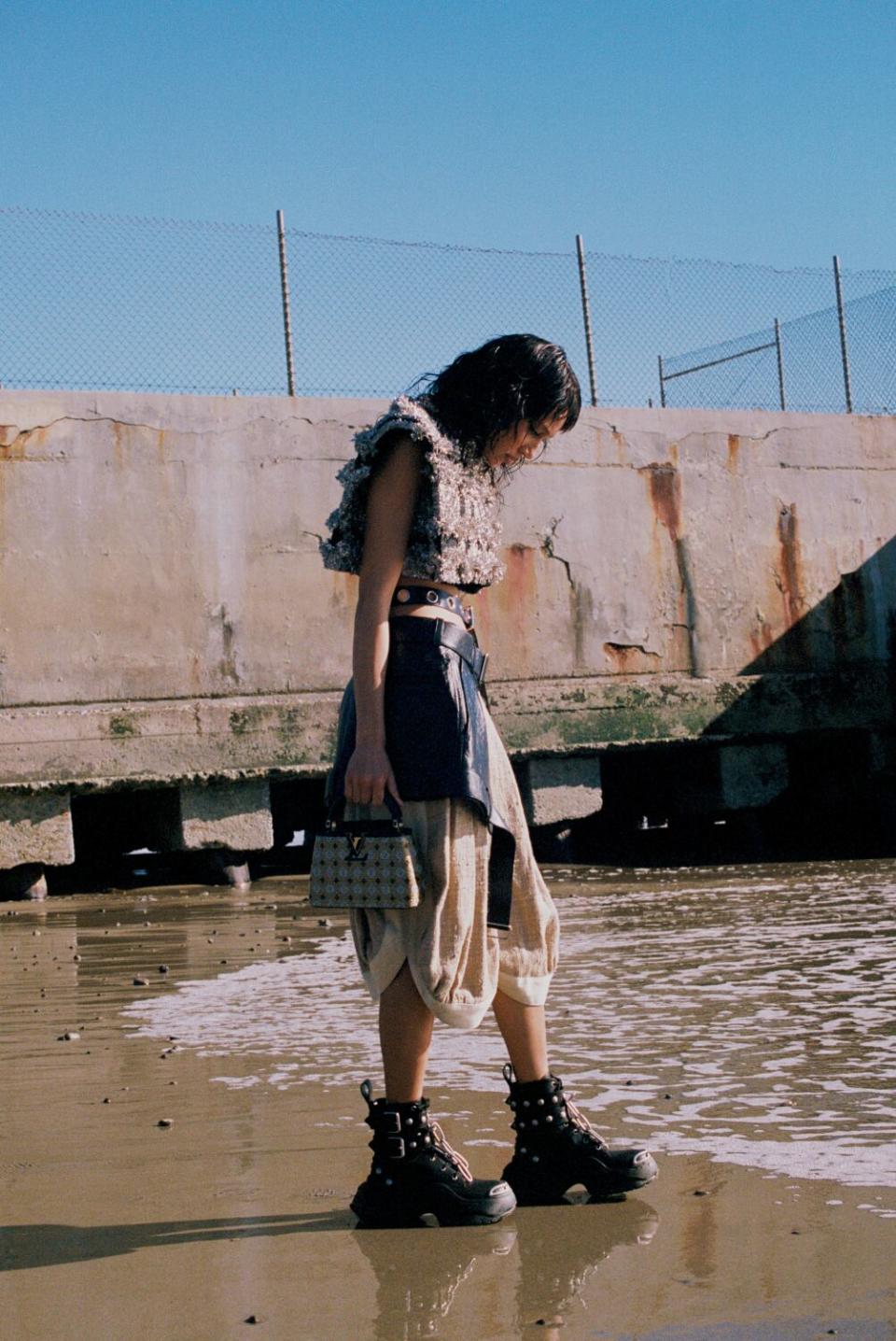
Dotting the front row of the show’s audience were 2000s celebrities like Beck and Paris Hilton, for whom Los Angeles culture is part of their identity. Hilton defined the garish, pastels-and-cheetah-print vibes of the “Bimbo Summit” period of L.A. celebrity history, far afield from the European brutality of Owens and Lamy. But black was as powerful two decades ago as it is now. Slimane trotted out slim fits, black boots with giant heels, leather and just a smattering of sleaze. All those bands I mentioned above played that night. It was a souped-up DeLorean blasting us back to the time when there were still lines out front of Cinespace at 1 a.m. After all, black is the color of night, and night in Los Angeles is a special time.
In the vast expanses of the city, where business and bars shut down and revelers wander home, true black exists. In cities that never sleep, it’s never quite dark. But in L.A., we flip the switch and let the void do its thing, only to start over anew the next day. Like my all-black wardrobe, the nighttime is a detox for our lives. When the next trend comes along that turns the lights on in my brains, I’ll be ready. Until then, I’m going to Dracula this s—.
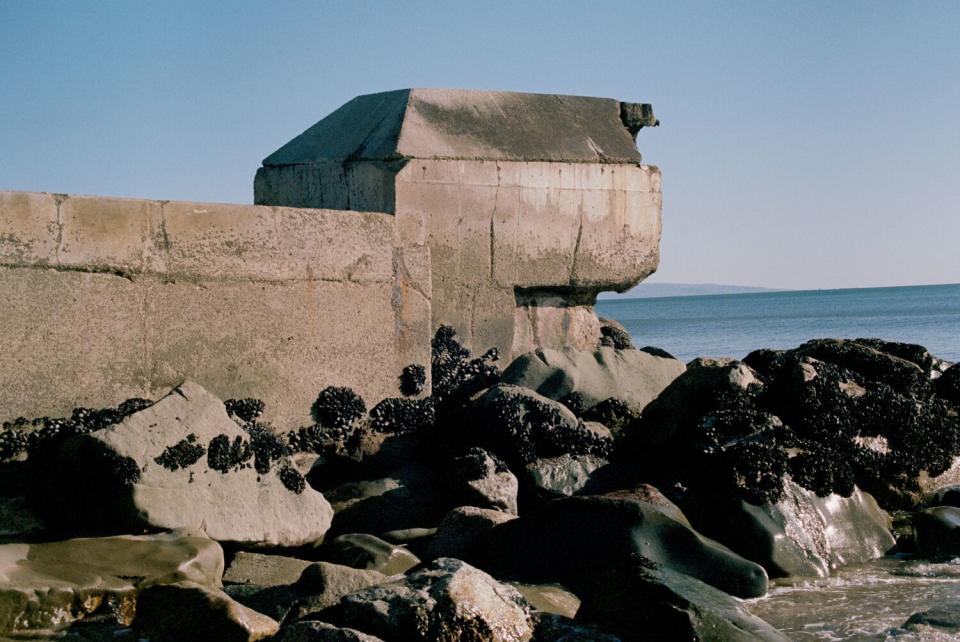
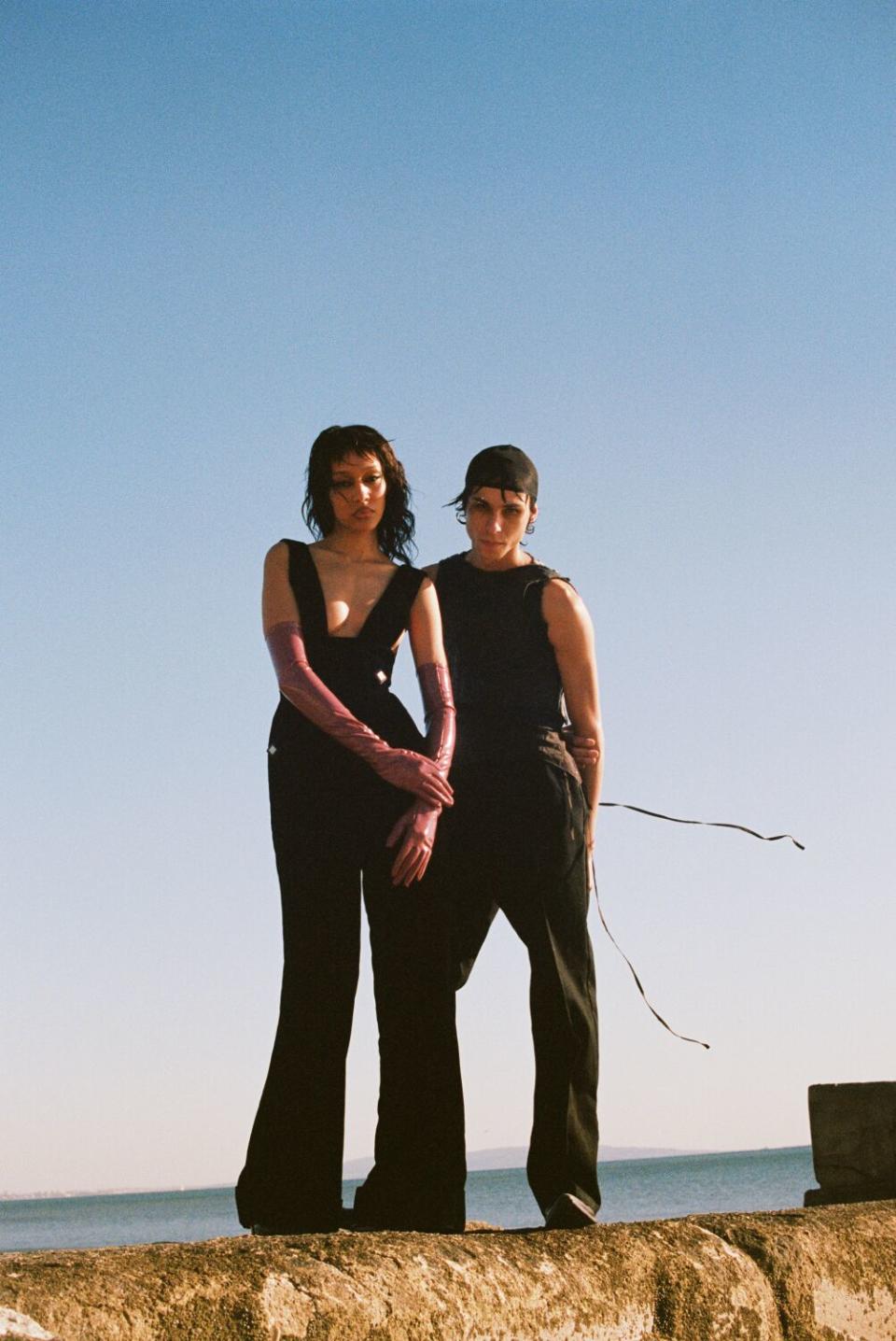
Styling: Keyla Marquez
Makeup: Selena Ruiz
Hair: Laura Dudley
Models: Maya Tourè, Emilio ventur Velasquez
More stories from Image
This story originally appeared in Los Angeles Times.

